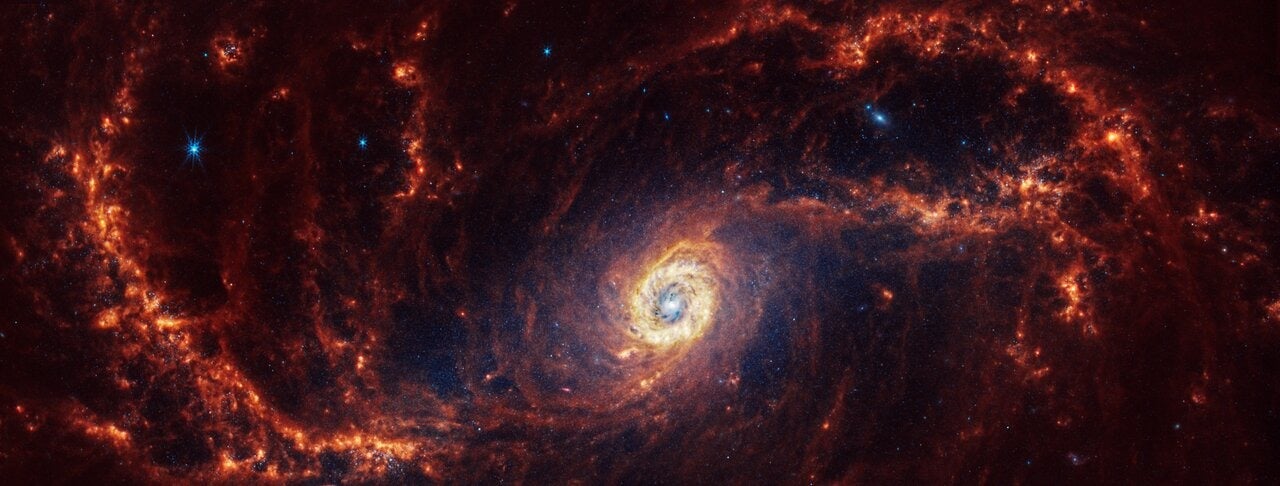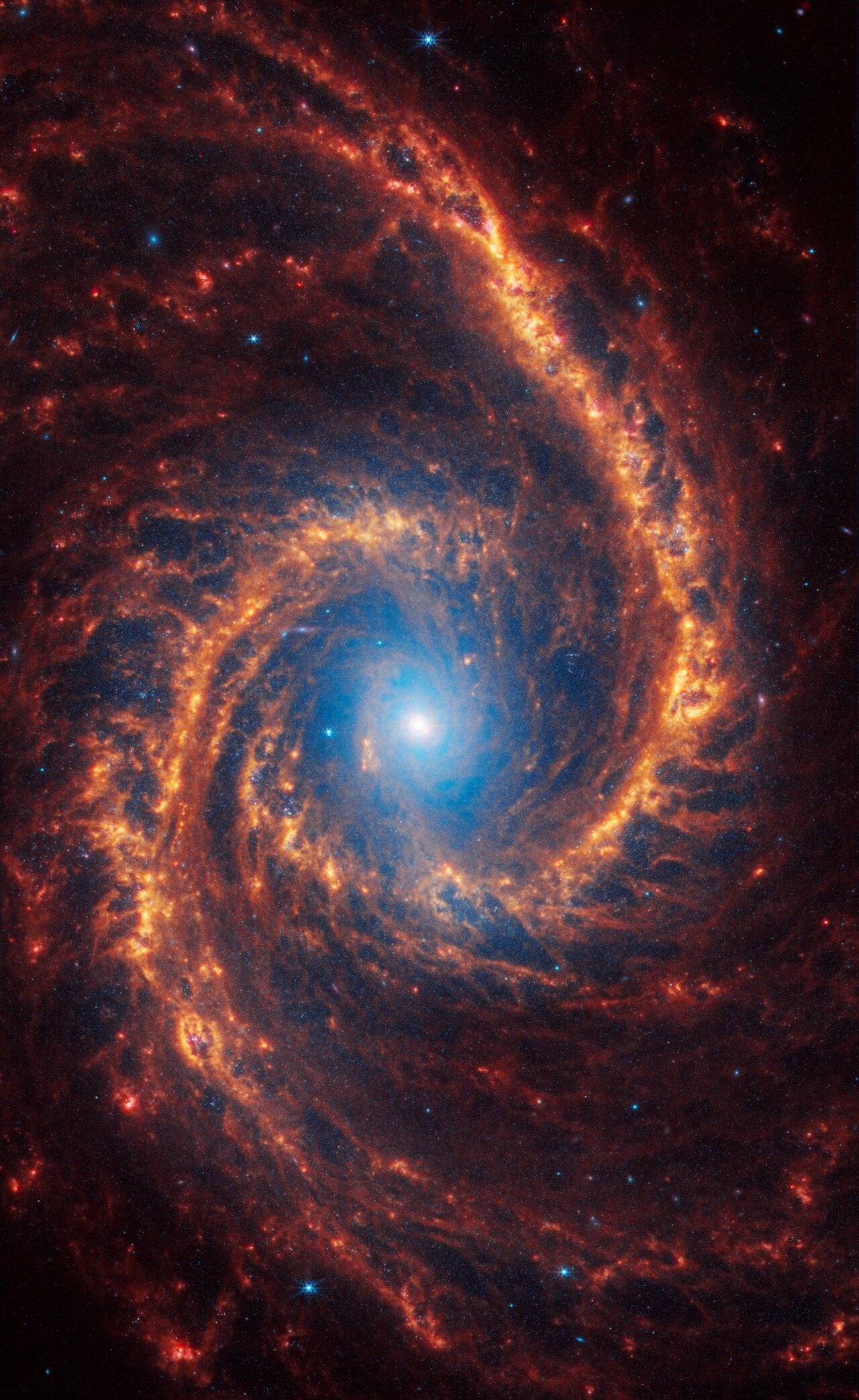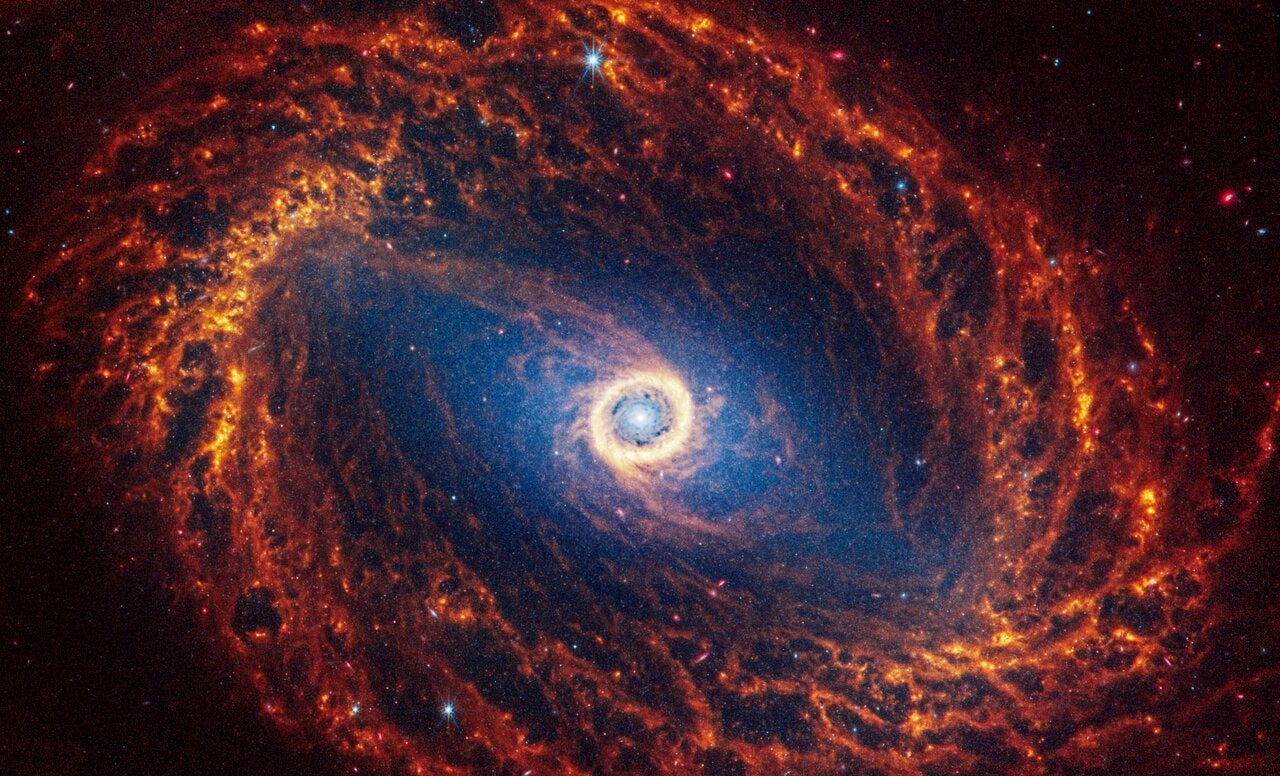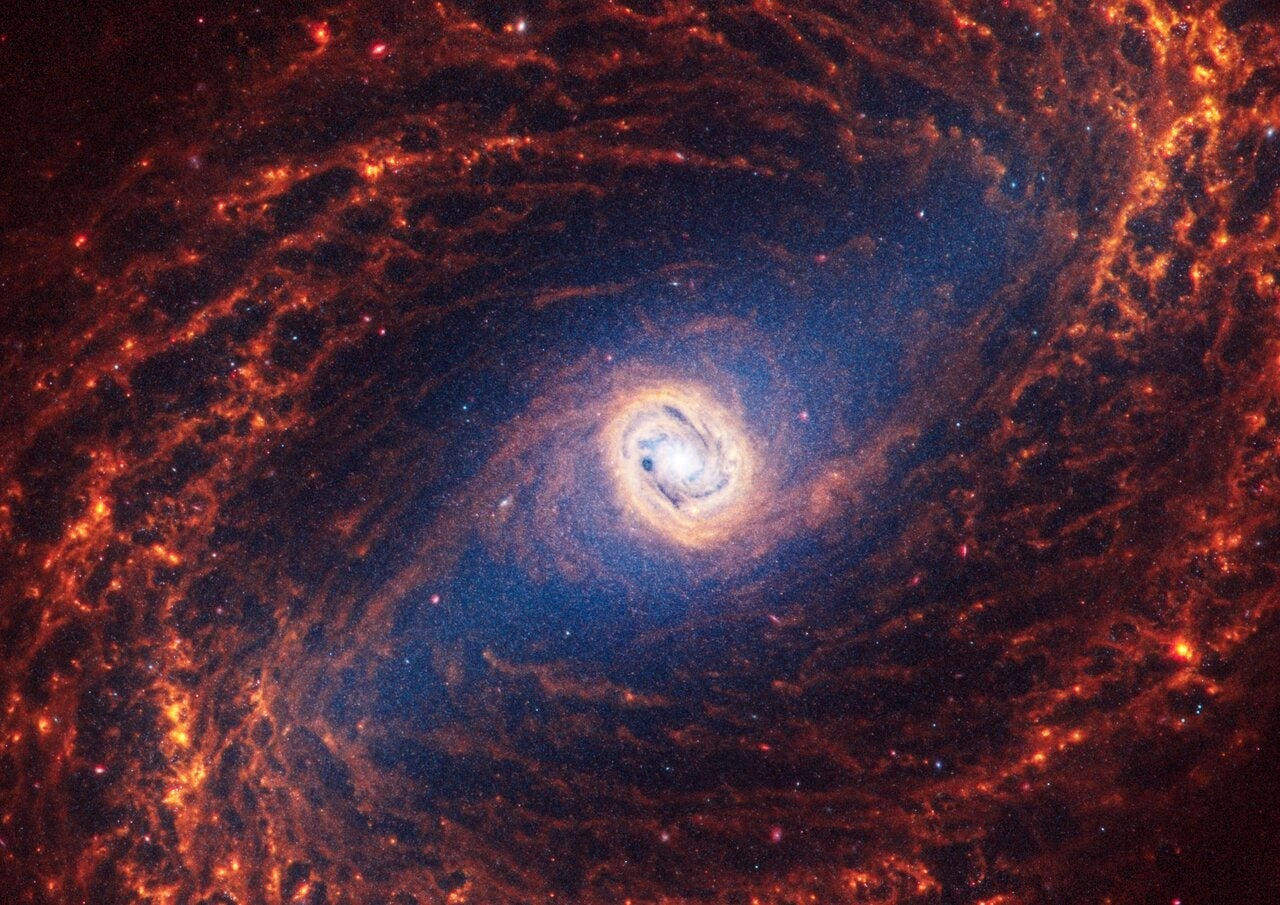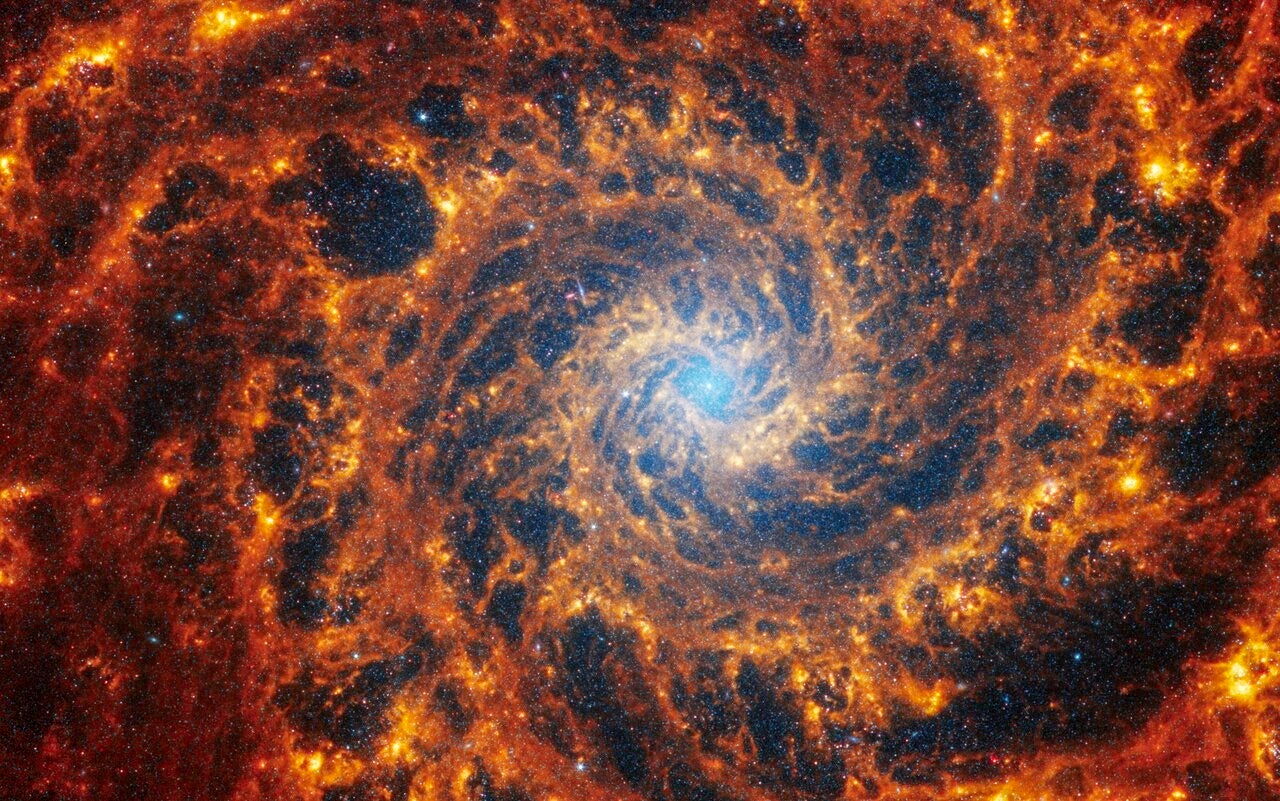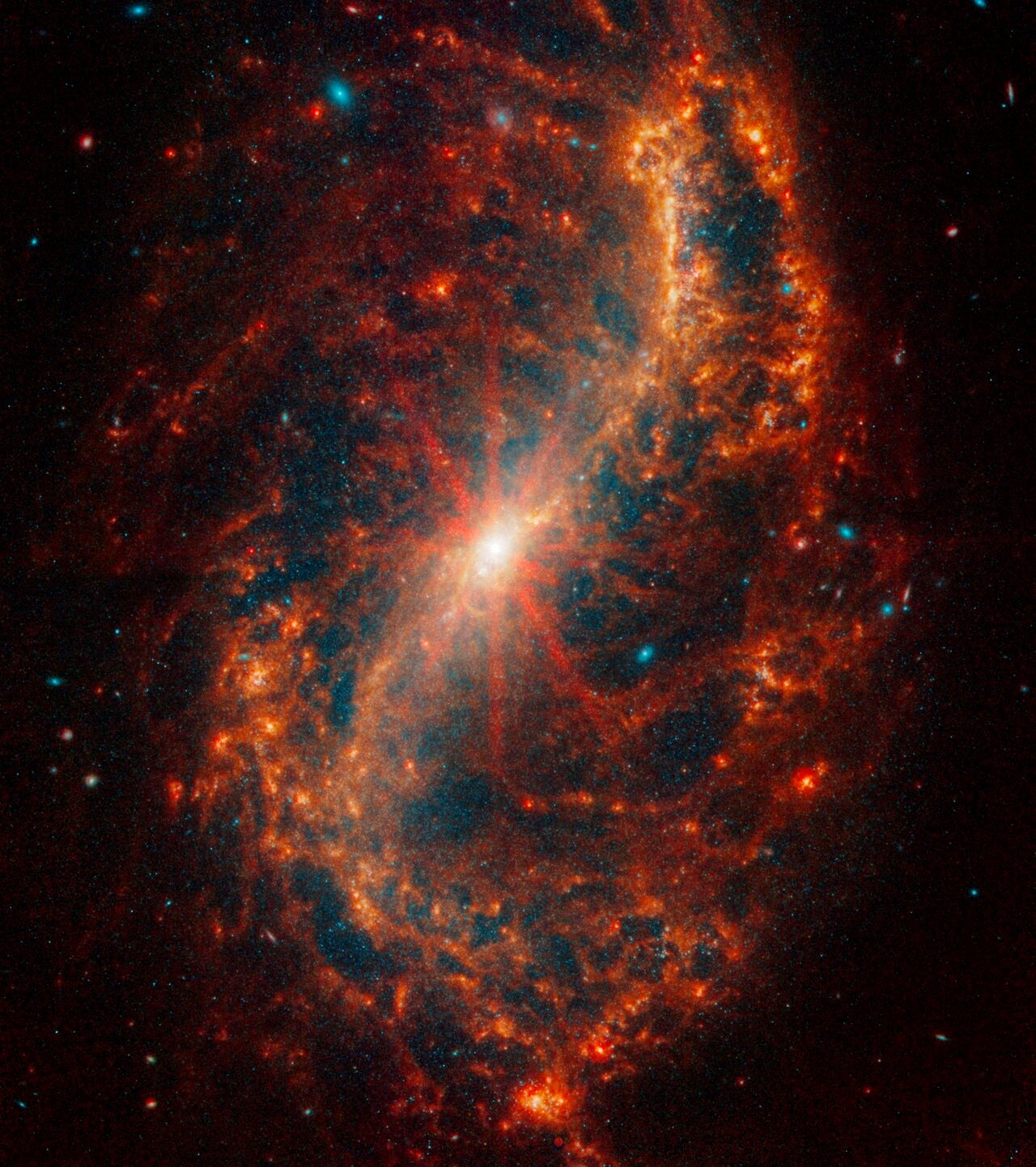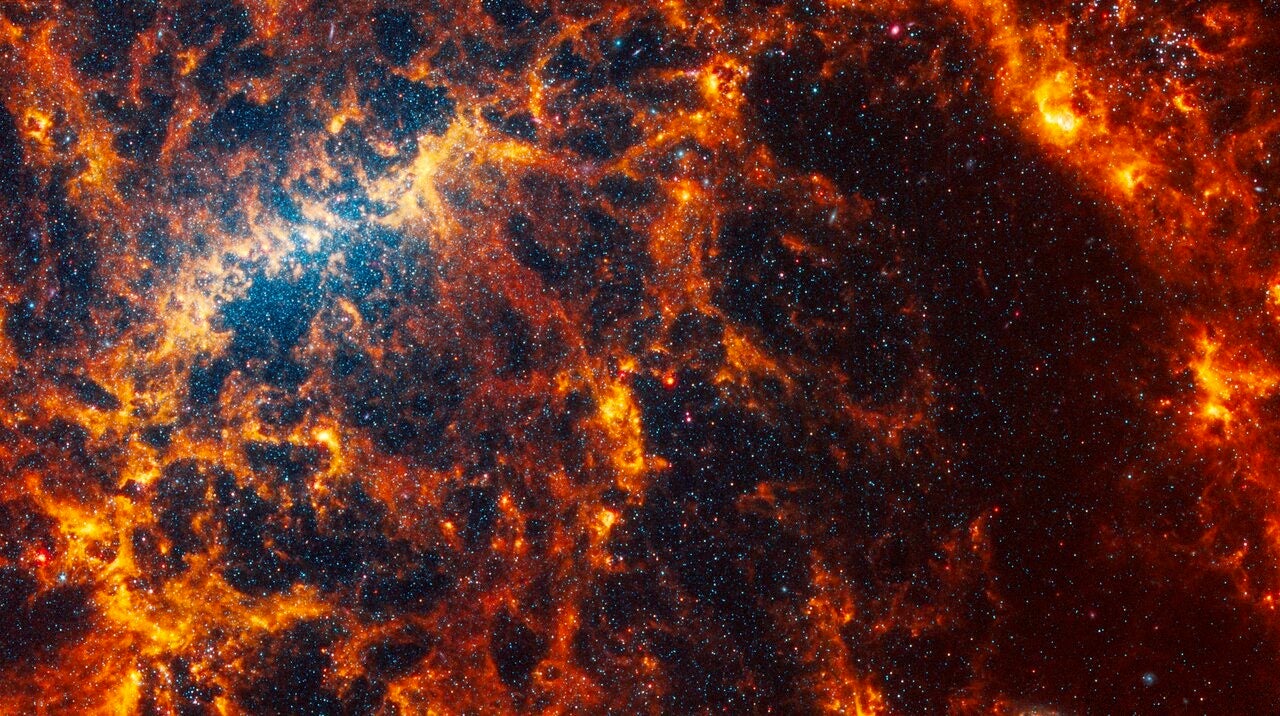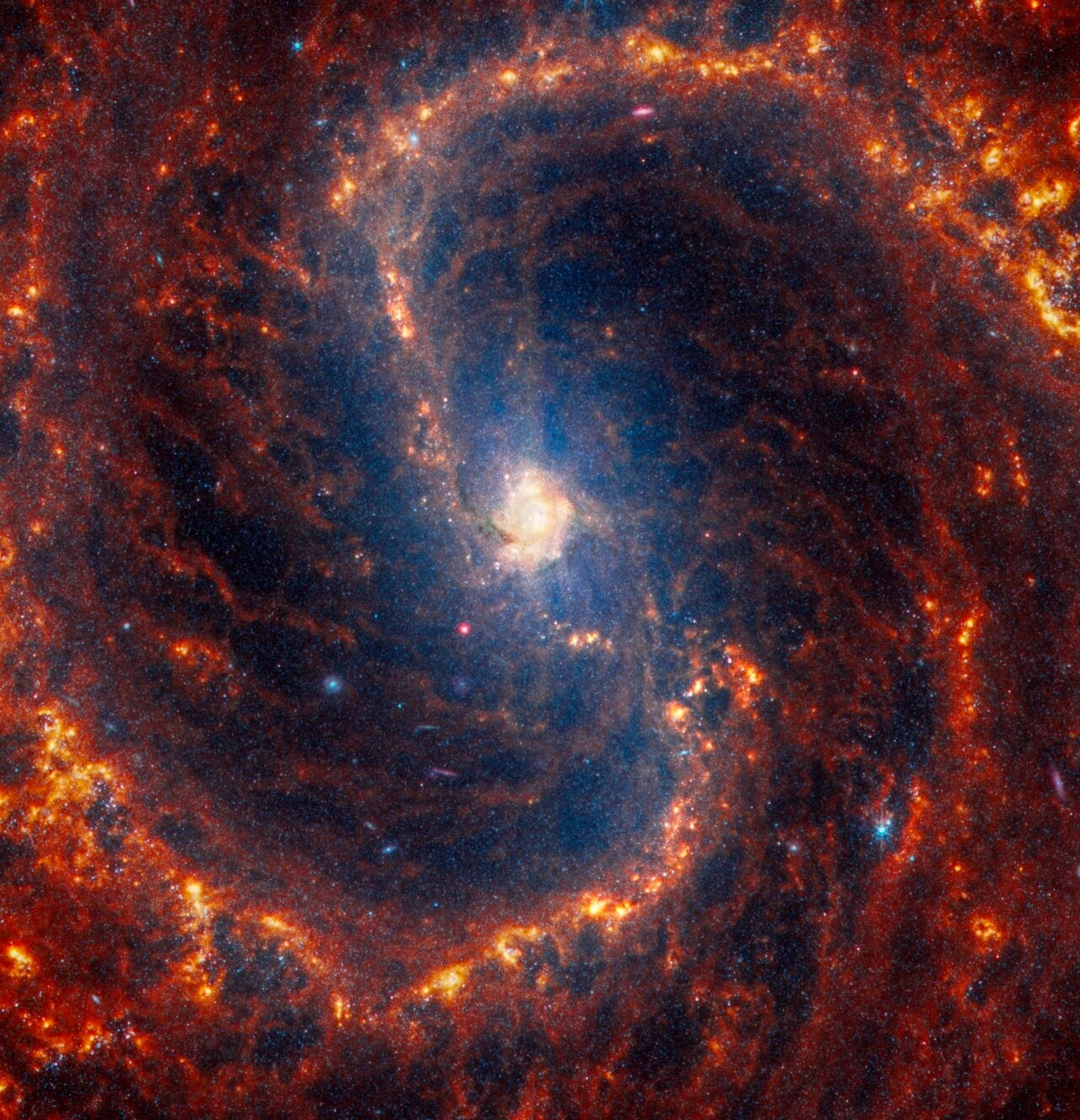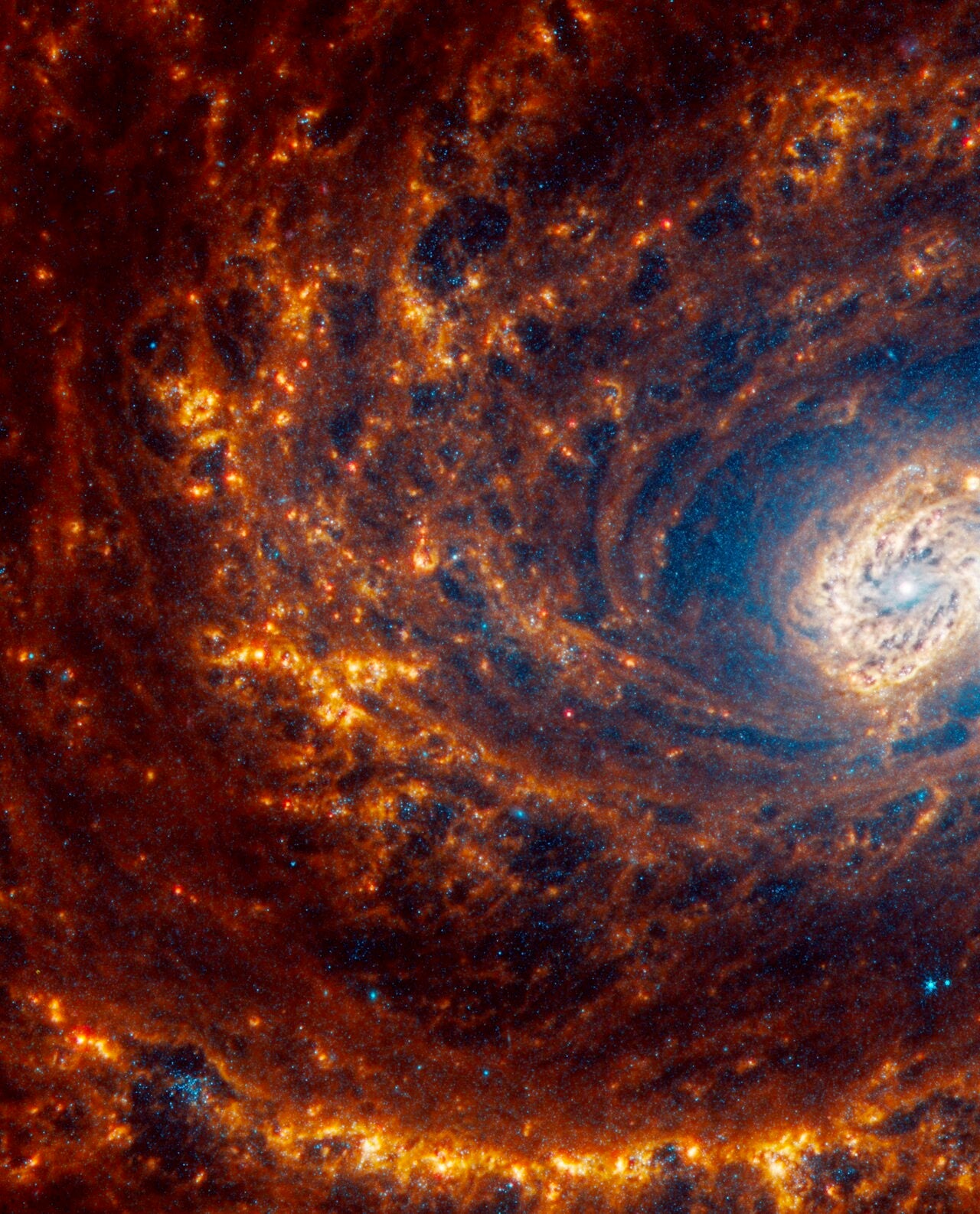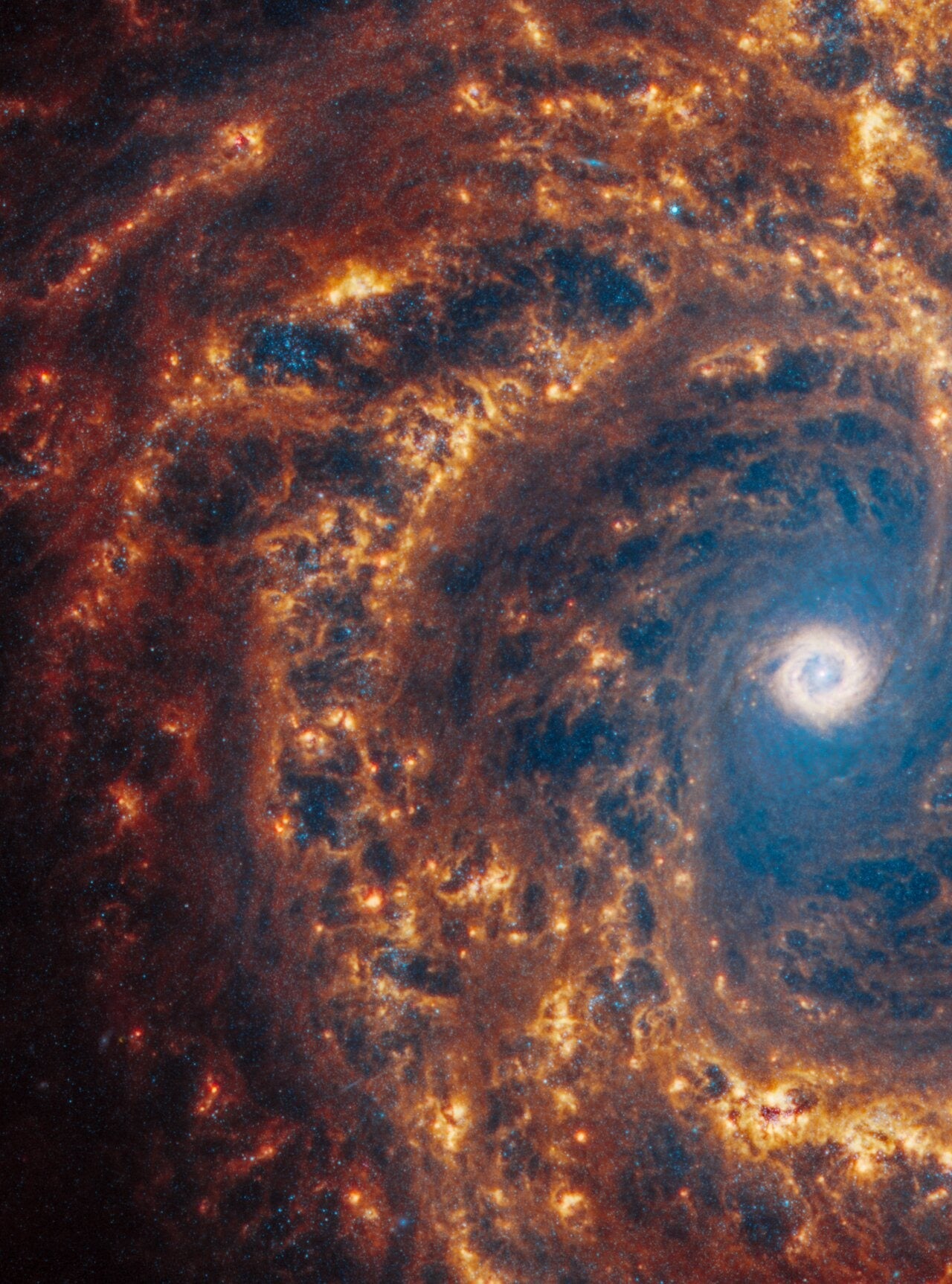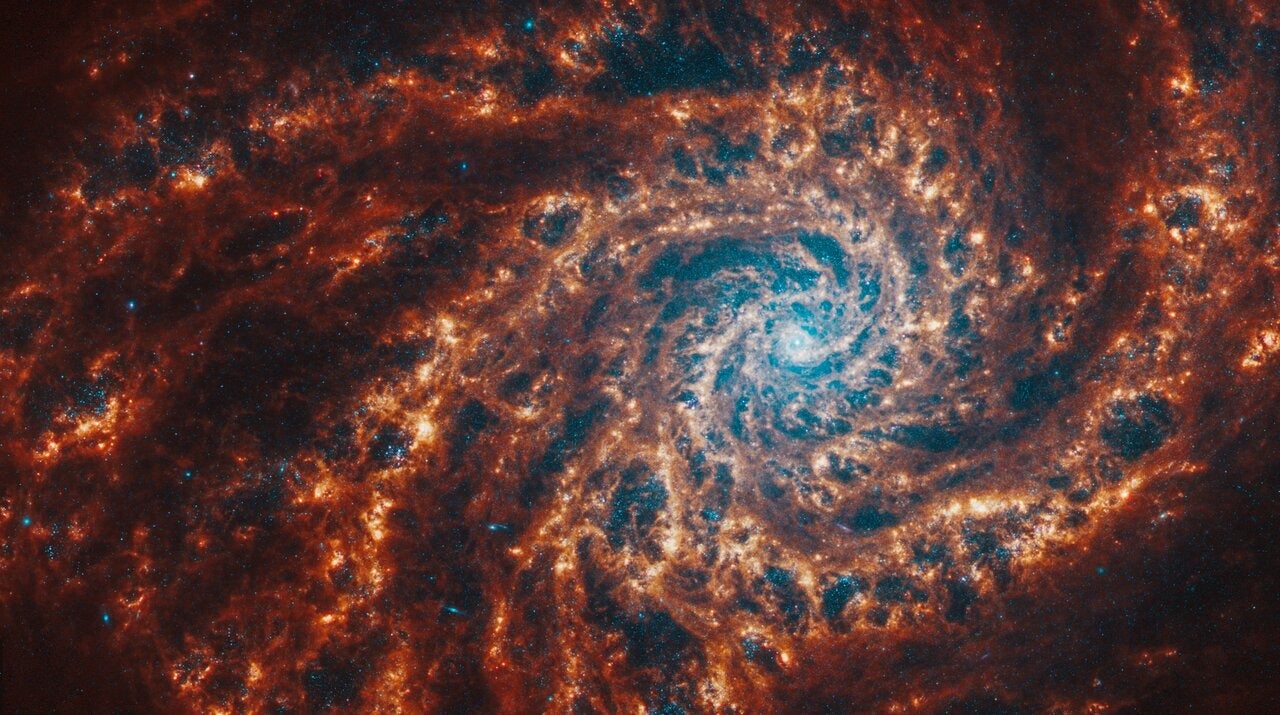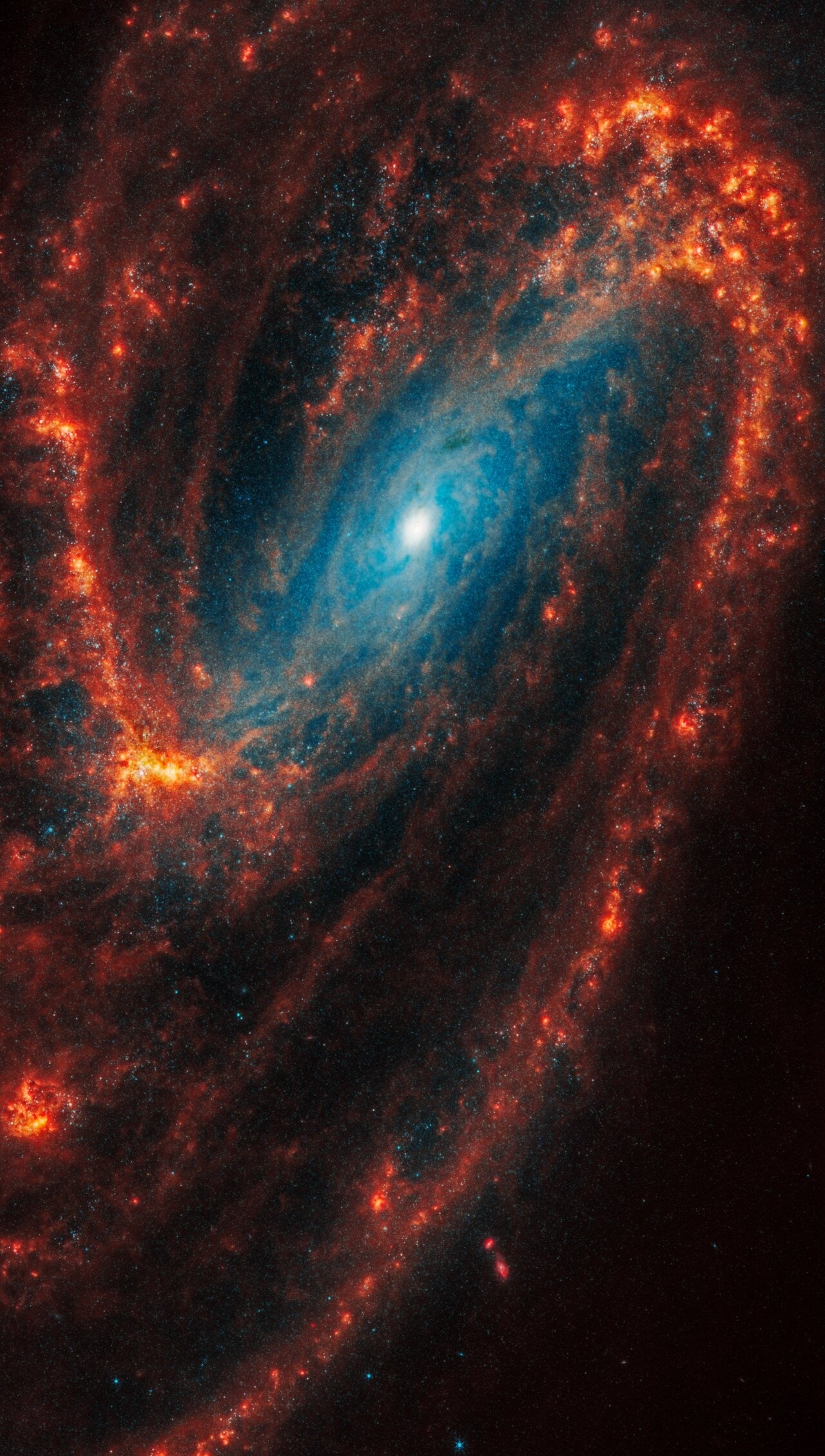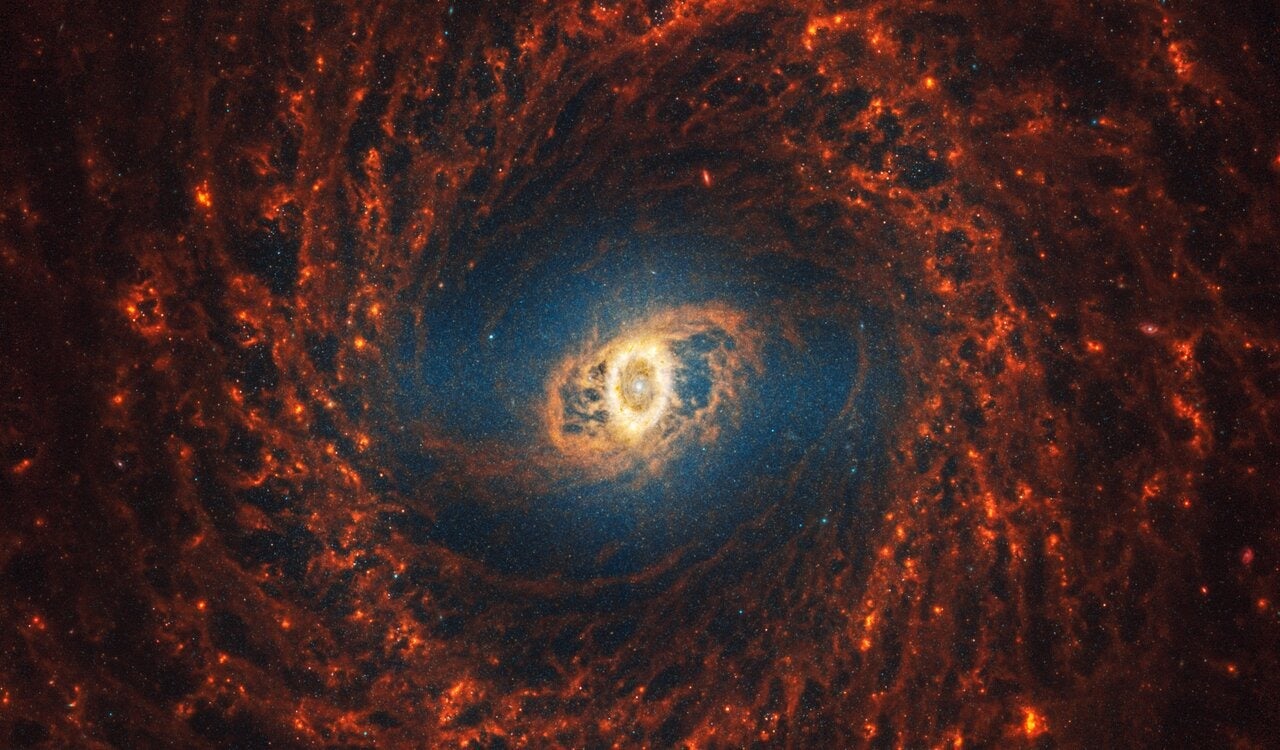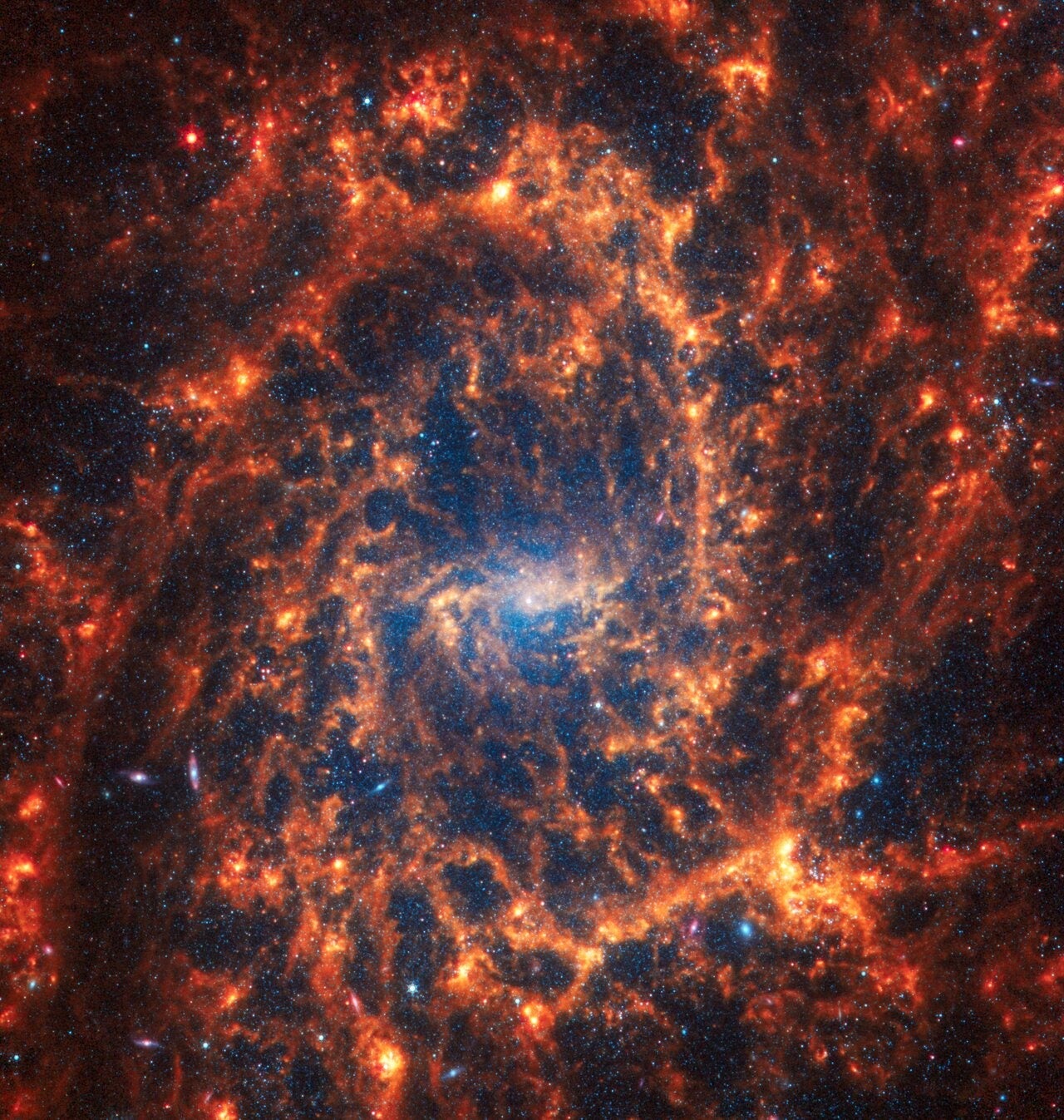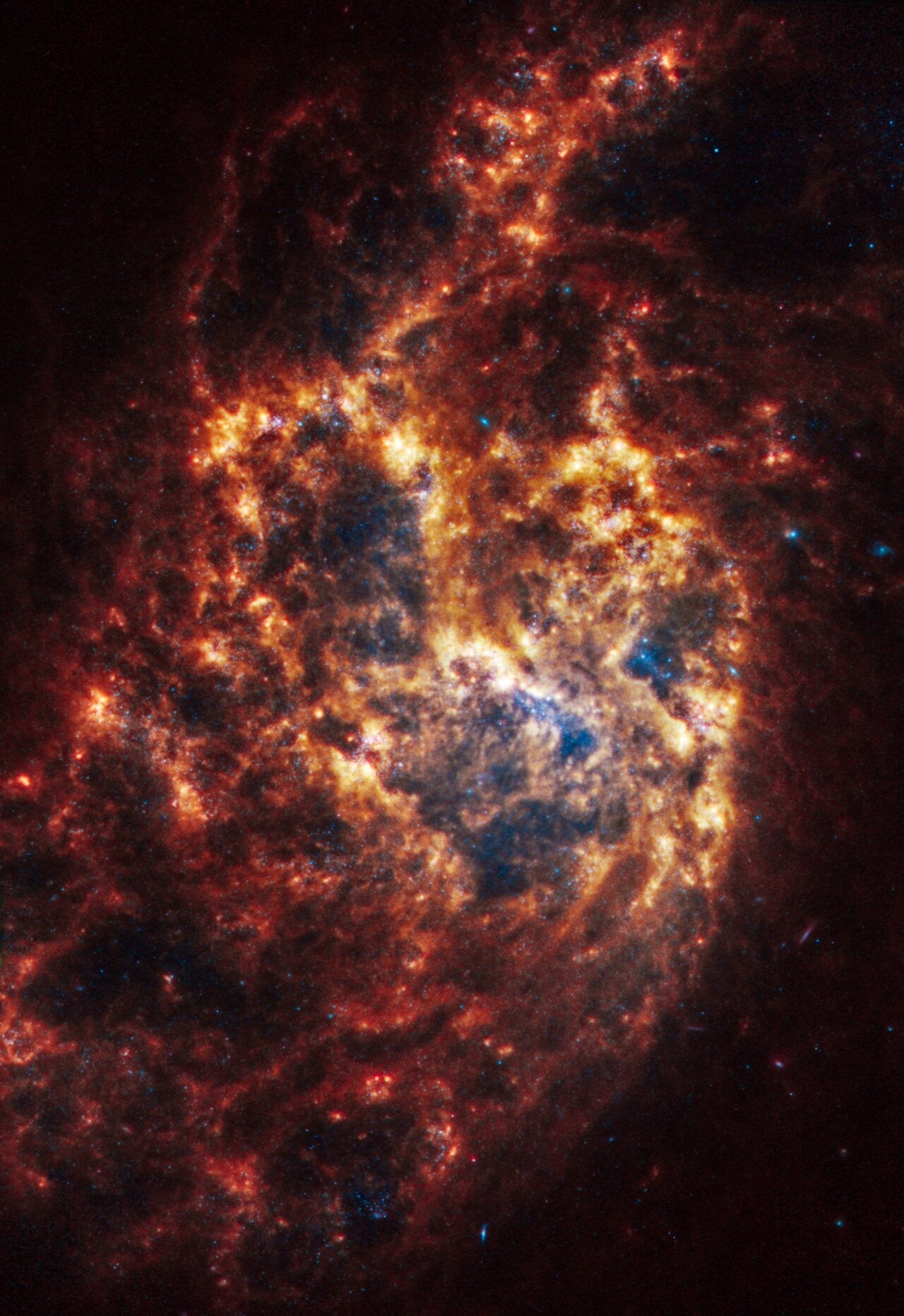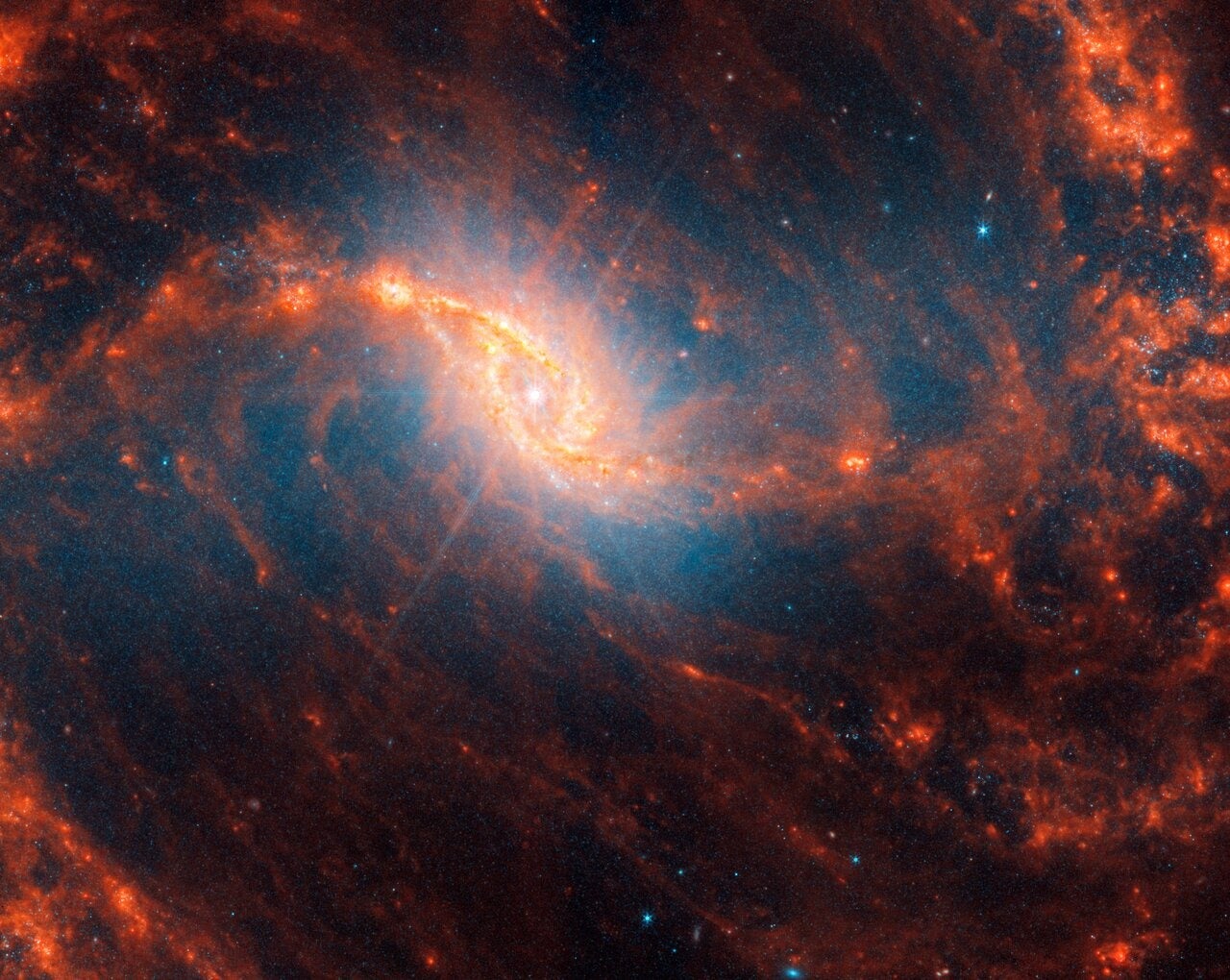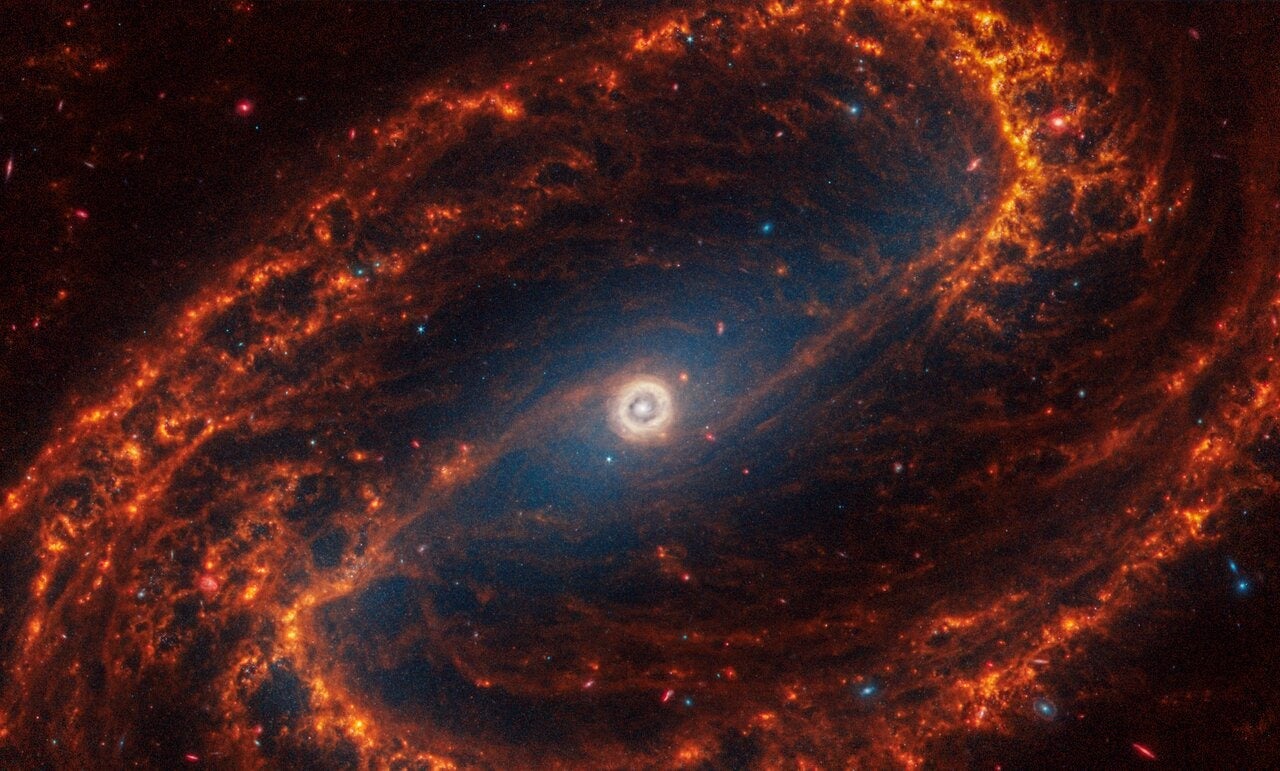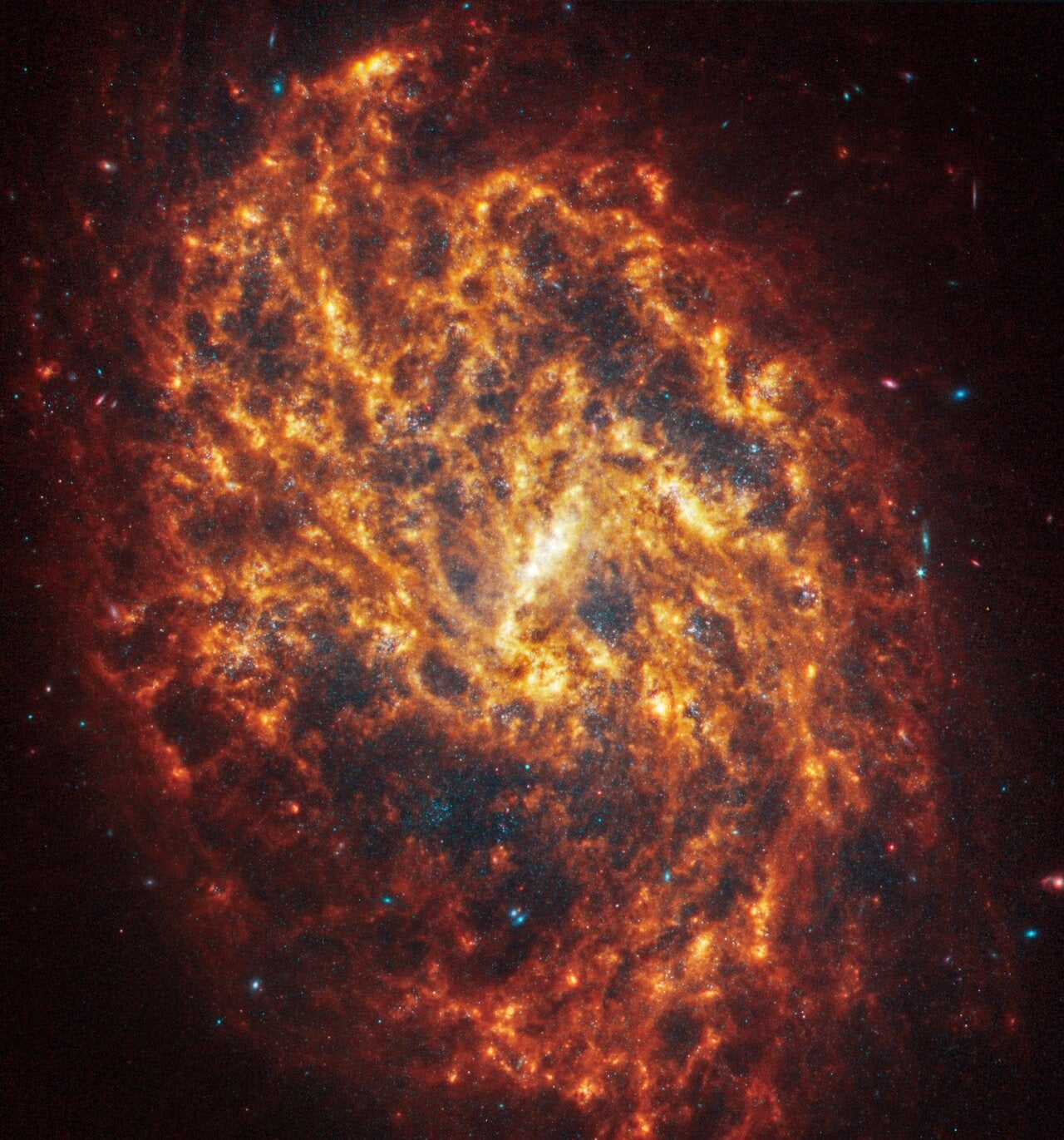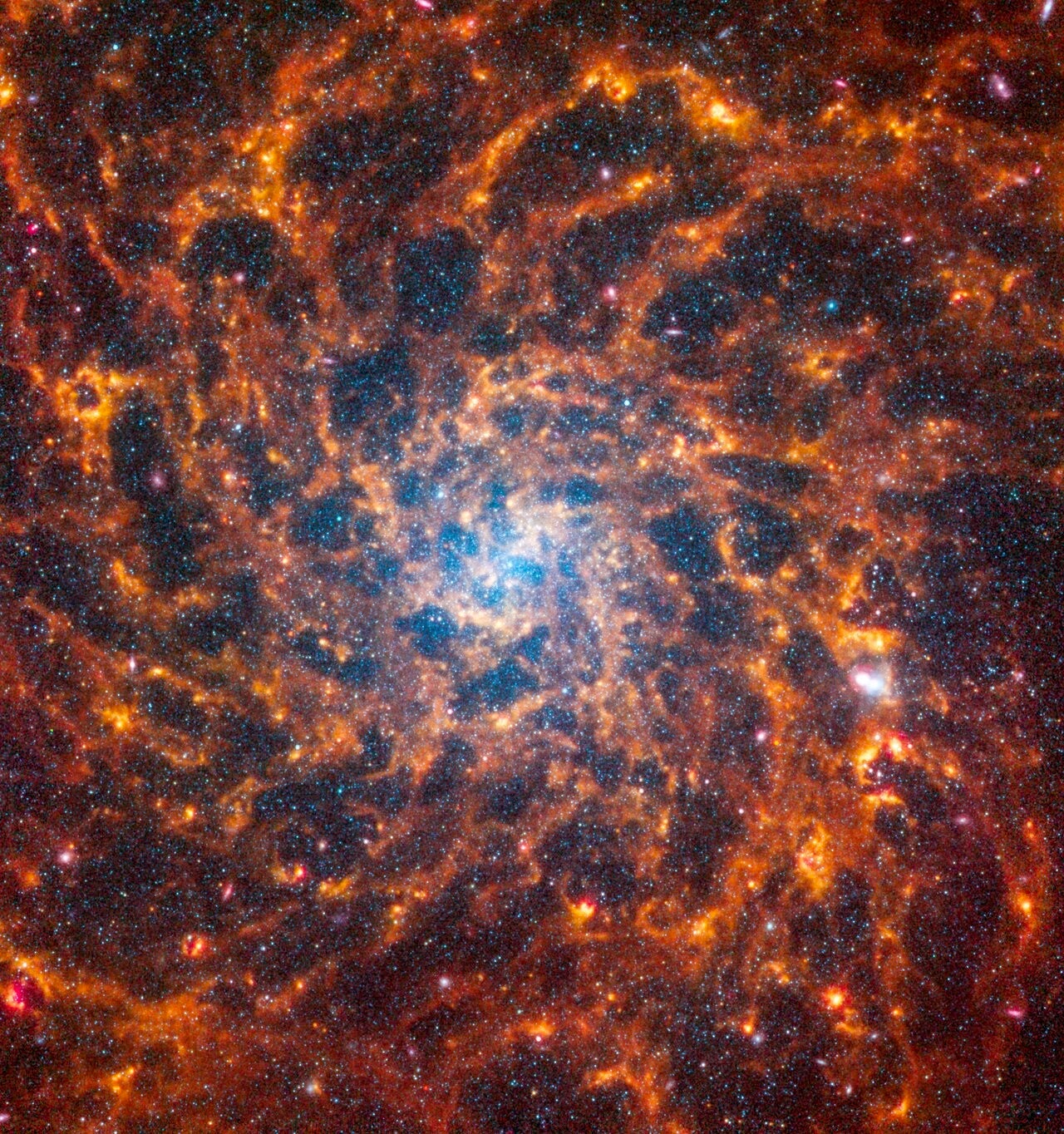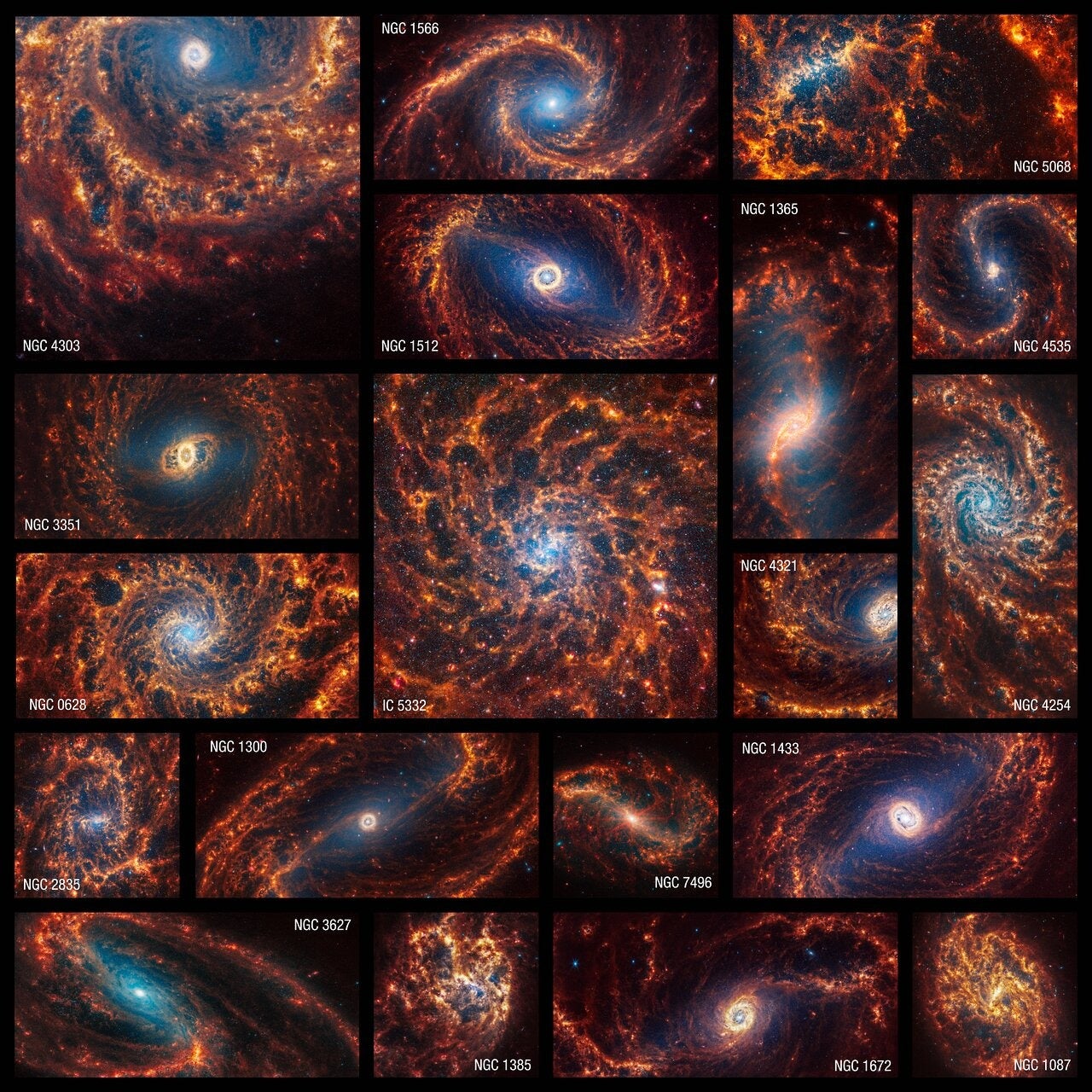
Appearing like twisted fireballs painting the sky, images of 19 face-on spiral galaxies in 11 constellations were captured by the James Webb Space Telescope (JWST) and publicly released this week. This collection offers a detailed look at one of the most common types of galaxy and may reveal how such objects are born and evolve through time.
As part of Physics at High Angular resolution in Nearby GalaxieS (PHANGS) program, JWST used the Mid-Infrared Instrument (MIRI) to capture the delicate webbing of warm dust (colored crimson and gold) within these galaxies. Meanwhile, JWST’s Near-Infrared Camera (NIRCam) images show stars and clusters, colored blue, according to a European Space Agency (ESA) news release.
Because galaxies grow from the inside out, the farther along the gaseous arms a star is located, the younger that star’s age. The bright blue centers visible in some of these galaxies hold very old stars.
Some images even have features resembling the Eye of Sauron from Lord of the Rings in some of the images. These pink and white “spotlights” — which show diffraction spikes — are either indications of an active supermassive black hole or a dense central cluster of stars.
Ultimately, researchers hope to combine these new data with the rest of the PHANGS database to glean why spiral galaxies form various patterns, as well as how stars form throughout them.
(Credit for all photos: James Webb Space Telescope)
PHANGS is a huge collaboration of 150 international researchers that combines data in multiple wavelengths from JWST, the Hubble Space Telescope, the Very Large Telescope, and the Atacama Large Millimeter/submillimeter Array.

